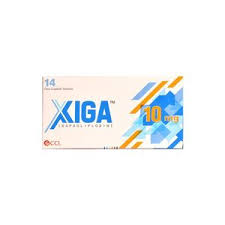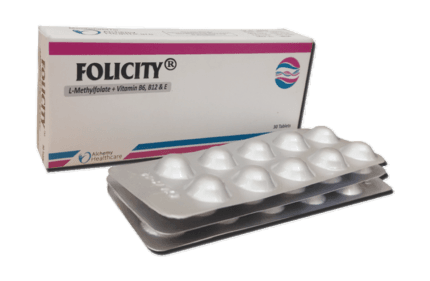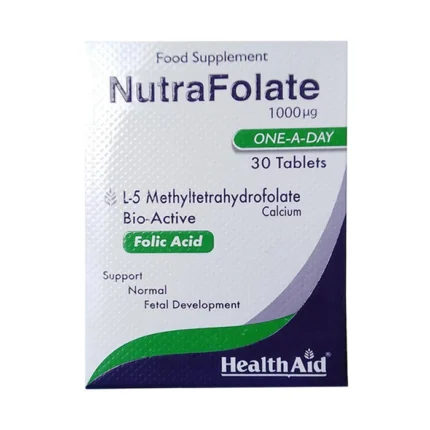Description
Dapagliflozin is a medication used to treat type 2 diabetes, and its effectiveness is partially due to its impact on insulin regulation. Specifically, dapagliflozin is a sodium-glucose co-transporter 2 inhibitor that reduces blood sugar levels by preventing the reabsorption of glucose in the kidneys and promoting its excretion in the urine. But that’s not all. This medication also directly reduces the insulin concentration in the bloodstream and stimulates the release of glucagon-like peptide 1 (GLP-1), a hormone that stimulates insulin release and helps reduce blood sugar levels. These combined effects of dapagliflozin work simultaneously on both kidney function and hormone-induced mechanisms to effectively reduce blood sugar levels, making it a valuable weapon in the treatment of diabetes.
Ingredients
DapagliflozinDrug Class
SGLT2 Inhibitor
Dosage Form
Tablet
Uses
Unveiling its multifaceted uses and transformative applications as follows:
- Control blood sugar levels in adults with type-1 diabetes.
- Lower the risk of kidney failure in adults with type-2 diabetes.
- Reduce the risk of stroke and heart attack in adults with type-2 diabetes.
- Treat vision problems in adults with type-1 or type-2 diabetes.
- Lower the risk of death from diabetes in adults with type-2 diabetes.
Dosage
Tailoring Treatment for Optimal Health, Prescribed Medication Dosage is:
- For treating type 2 diabetes, the recommended dose of Dapagliflozin is either 5 mg or 10 mg once daily.
- The 10 mg dose is typically prescribed if blood sugar levels are not adequately controlled with the 5 mg dose or if better blood sugar control is desired.
- It’s important to note that the specific dosage and treatment plan should be determined in consultation with a healthcare provider, who can consider factors such as individual body weight, kidney function, and other medical conditions to determine the most appropriate dosage.
- Additionally, it’s crucial to follow the instructions and recommendations provided by your healthcare provider and adhere to the prescribed dosage to ensure the safe and effective use of the medication.
In case of Overdose
An overdose of Dapagliflozin 10mg can lead to unpleasant side effects such as nausea, vomiting, dizziness, or impaired consciousness. It is of utmost importance to seek immediate medical attention in such cases. The treatment approach for an overdose typically involves providing supportive care. This entails addressing any underlying medical problems and vigilantly monitoring the patient’s vital signs. To counteract the effects of the excess drug in the body, activated charcoal may be used to absorb and eliminate the overdose drug.
Missed Dose
If you miss a dose of dapagliflozin 10mg, it is important to seek advice from your medical provider as soon as possible. You have two choices; you can take the missed dose as soon as possible if it is less than half an hour before your next dose. However, if it is closer to the time for your next dose, you should skip the missed dose and continue on your regular regimen. Doubling up on doses can result in an overdose so ensure you avoid this. It is essential to maintain a regular schedule for your medication as this ensures you get the full benefit of the medication. If you are uncertain about what to do or have further concerns, it is best to consult your doctor or pharmacist for guidance specific to you.
How To Use
Before starting to take Dapagliflozin, be sure to read the medication guide provided by your pharmacist. It is important to ask your doctor or pharmacist questions regarding the medication before proceeding. This medication should be taken regularly at the same time each day to ensure you get the full benefit from it. The tablets should be swallowed whole, not crushed, chewed, or broken. If you are unable to swallow the tablet whole, consult your doctor or pharmacist for advice. The usual dose starts at 5 mg, taken once daily. However, your dose may be increased to 10 mg once daily if blood sugar levels are not controlled. The maximum recommended dose is 10 mg once daily. While taking this medication, it is important to monitor your kidney function and potassium levels in the blood, so be sure to keep all appointments with your doctor. If you miss a dose, take it as soon as possible. However, if it is almost time for your next dose, skip the missed dose and take your regular dose as scheduled. Do not take a double dose to make up for a missed one. This medication may cause symptoms such as feeling tired, nausea, or vomiting. Notify your doctor if you experience any of these symptoms. It is also important to maintain a healthy lifestyle while taking this medication, including a balanced diet and regular exercise. Always keep this medication in its original container, tightly closed.
When Not to Use
Discerning instances where this medication may not be appropriate:
- Allergic reactions to the drug
- Severe kidney disease or failure
- Nausea, vomiting, or diarrhea that cause dehydration
- Severe infection or illness that causes dehydration due to vomiting or diarrhea
- Excess potassium in your blood (hyperkalemia)
Side Effects
Unraveling the side effects lurking behind this medications are as follows:
- Increased risk of infection
- Fatigue, weakness
- Increased blood sugar levels
- Decreased appetite
- Weight loss
- Digestive issues such as nausea, vomiting, diarrhoea
- Dry mouth, increased thirst, increased urination
- Headaches
- Dizziness, lightheadedness, fainting
- Muscle pain, weakness
- Joint pain
- Difficulty concentrating, confusion
Precautions & Warnings
Patients should be cautious and consider the following precautions and warnings before initiating treatment:
- Not recommended for patients with an eGFR <15 mL/min/1.3 m² or severe hepatic impairment.
- Assess for ketoacidosis immediately if nonspecific symptoms like nausea, vomiting, anorexia, abdominal pain, excessive thirst, difficulty breathing, confusion, unusual fatigue, or sleepiness occur, regardless of blood glucose levels.
- Stop treatment immediately if diabetic ketoacidosis is suspected or diagnosed. Patients at higher risk of diabetic ketoacidosis include those with low β cell function reserve (e.g., type 2 diabetes patients with low C peptide or latent autoimmune diabetes, or patients with a history of pancreatitis), conditions that lead to restricted food intake or severe dehydration, those with reduced insulin doses, and those with increased insulin requirements due to acute medical illness, surgery, or alcohol abuse.
- Not to be used for patients with type 1 diabetes.
- Evaluate for necrotizing fasciitis if pain, tenderness, erythema, or swelling in the genital or perineal area with fever or malaise occurs. Discontinue and institute prompt treatment if Fournier’s gangrene is suspected.
- Consider temporarily interrupting treatment when treating pyelonephritis or urosepsis.
- Use caution in patients with cardiac failure, NYHA class IV, or CKD without diabetes who do not have albuminuria, polycystic kidney disease, glomerulonephritis with flares, or those on recent cytotoxic, immunosuppressive, or immunomodulating renal therapy, or who have received organ transplants.
- Be aware of the risk of lower limb amputations.
- Contains lactose; not suitable for patients with galactose intolerance, total lactase deficiency, or glucose-galactose malabsorption.
- Not recommended during the second or third trimester of pregnancy or while breastfeeding.
- Not for use in children under 18 years or elderly patients aged 65 years and older.
Drug Interactions
Drug interactions with dapagliflozin include:
- Diuretics (e.g., furosemide) (may increase the risk of dehydration and hypotension)
- Insulin (e.g., glargine) (may increase the risk of hypoglycemia- monitor blood glucose levels closely)
- Oral hypoglycemic agents (e.g., metformin) (may have additive effects on blood glucose control)
- Renin-angiotensin-aldosterone system inhibitors (e.g., lisinopril) (may increase the risk of hypotension and renal impairment)
- Nonsteroidal anti-inflammatory drugs (NSAIDs) (e.g., ibuprofen) (may impact renal function and increase the risk of dehydration)
- Other antidiabetic medications (e.g., sulfonylureas) (may enhance the effect on blood glucose lowering)
- CYP3A4 inhibitors (e.g., ketoconazole) (no significant interaction, but monitor for potential changes in efficacy)
- CYP3A4 inducers (e.g., rifampin) (may affect the metabolism and efficacy of dapagliflozin)
Storage/Disposal
Dapagliflozin is a medication that should be stored at room temperature. Excessive heat or light can harm the medication, so it is important to store it in a cool, dry place away from direct sunlight and moisture. Ideally, this medication should be kept out of sight and reach of children and pets, as well as away from areas where it may be susceptible to heat or moisture, such as bathrooms or kitchen areas. To ensure the safest and most effective use of this medication, be sure to follow the instructions on the label carefully and contact your healthcare professional if you have any questions or concerns about its storage.
Laboratory Screening
Dapagliflozin is a medication that helps lower blood sugar levels by enhancing the body’s response to insulin. To monitor and manage your blood sugar levels, fasting blood sugar, HbA1c (long-term blood sugar control), and glucose tolerance tests are recommended. These tests are important to ensure the medication is working properly and that you have healthy blood sugar levels, reducing the risk of complications. Depending on your medical condition, age, and other factors, your healthcare provider may tailor the frequency and specifics of the tests. Your healthcare provider may also monitor your weight, kidney function, and potassium levels while on this medication. It is crucial to discuss the required lab tests with your healthcare provider before taking dapagliflozin.
Xiga 10 mg (Dapagliflozin) Tab 14’s
₨ 41
35 in stock


Get Your Healthcare Delivered Nationwide!
No matter where you reside in Pakistan, medlife.pk brings your healthcare essentials straight to your doorstep! We partner with trusted shipping companies like TCS, M&P, LEOPARD Courier, Trax, and Call Courier for nationwide delivery.
For ultimate convenience, enjoy Cash on Delivery (COD) with a flat rate of Rs.299 across Pakistan. Prefer to pay upfront? Orders over Rs.3,000 receive free shipping when you pay with Bank Transfer, JazzCash, Easypaisa, or Credit/Debit Card. And the perks don't stop there! Orders exceeding Rs.5,000 with advance payment not only get free shipping, but also earn you a discount coupon for your next medlife.pk purchase.
Rest assured, our team meticulously packs and ships your order for safe arrival, ensuring you receive the genuine products you deserve. So, browse our selection, choose your payment method, and get ready to experience the medlife.pk difference! Happy shopping!





















Reviews
There are no reviews yet.